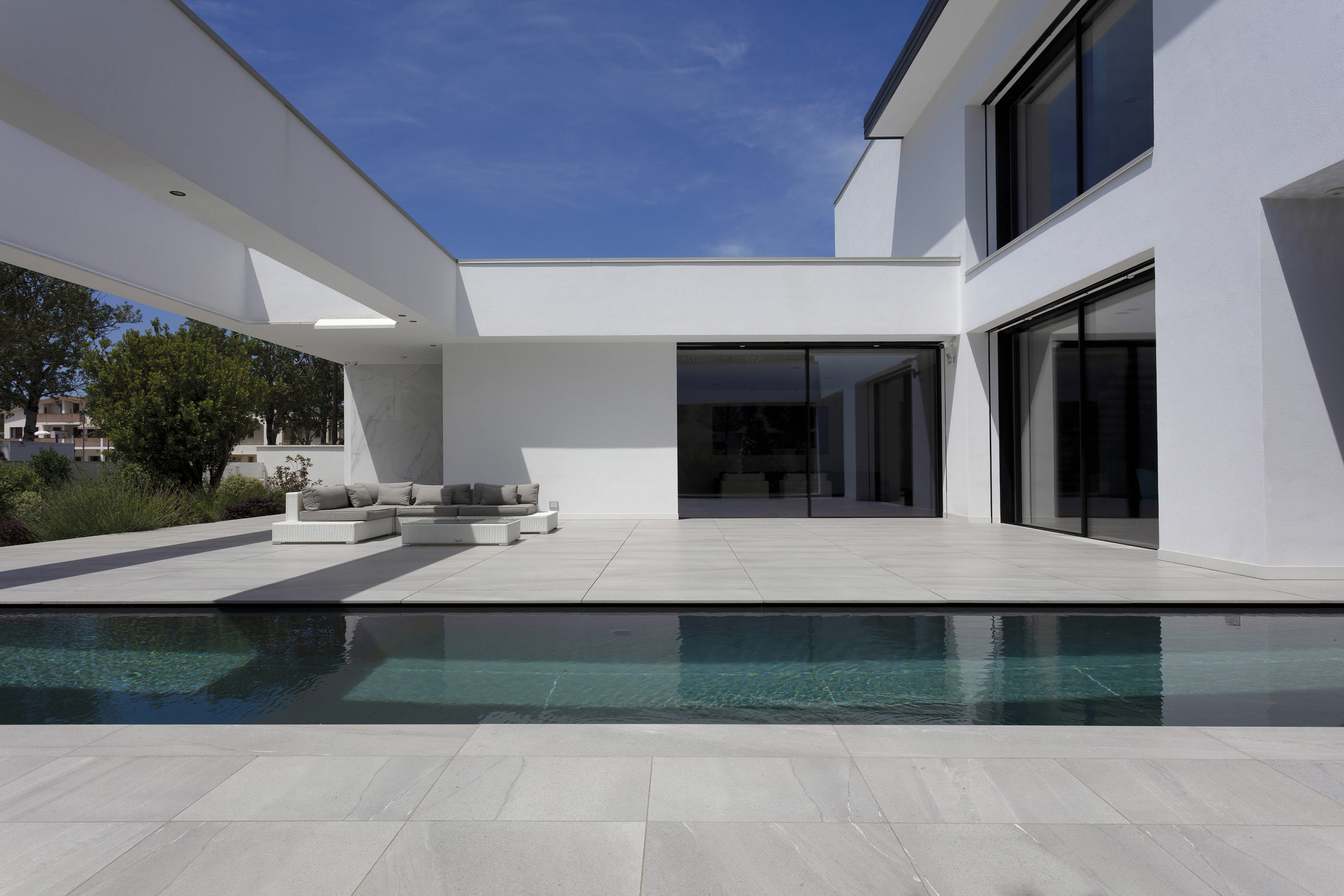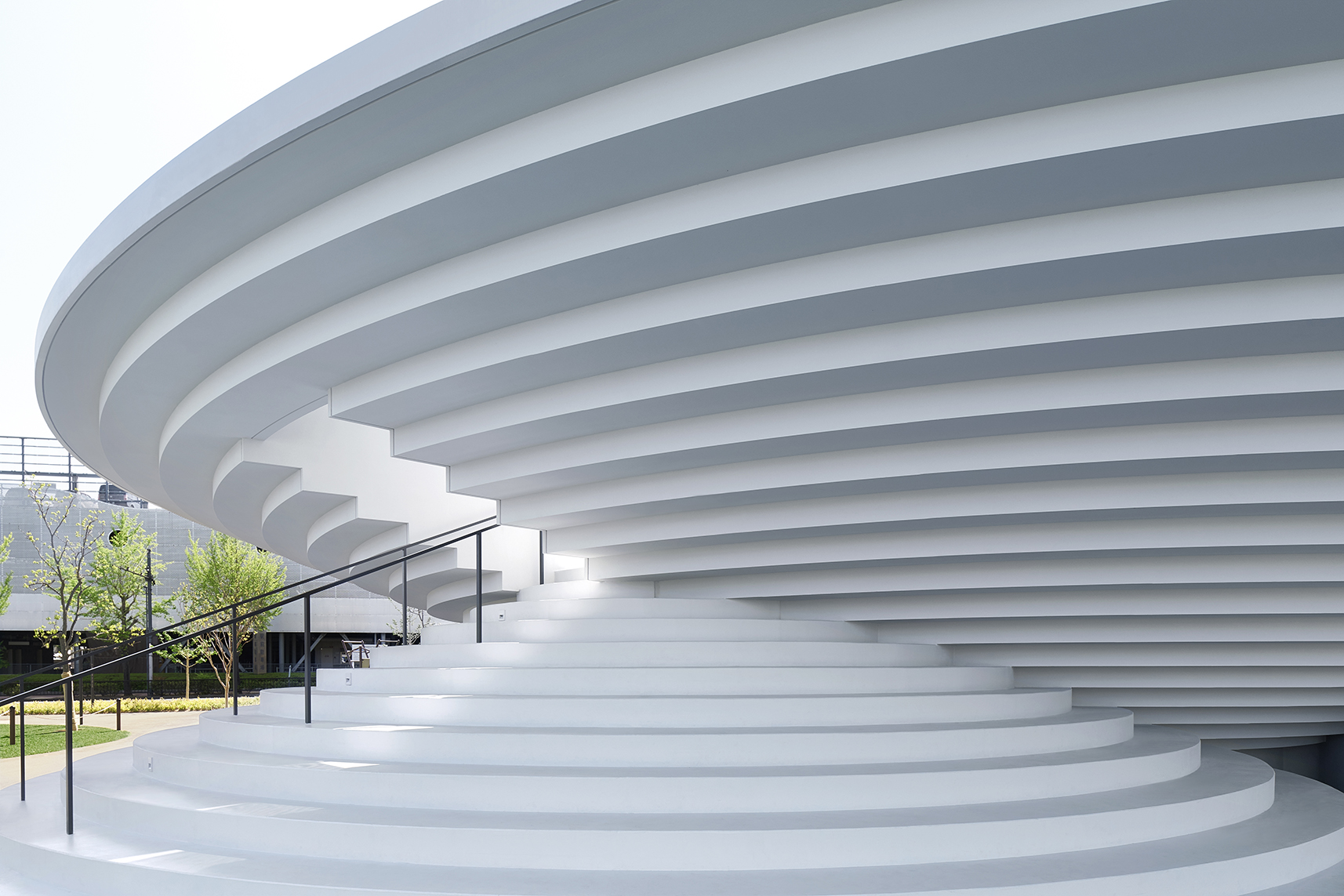Re-Emerge Pavilion – Architectural Association (AA) Emergent Technologies & Design (EmTech) Postgraduate Programme and Hassell Studio in London have collaborated to create a new pavilion in Bedford Square. The Re-Emerge pavilion explores new design methods that repurpose materials which have completed their first life cycle towards innovative structural formations. The project addresses generative design, material computation, and large-scale fabrication, emphasising ecological impact from the early phases of the design process onwards. Re-emerge revives the tradition of building on Bedford Square as a collaboration between an academic programme at the AA and partners from practice, to test ideas at scale and imagine new possibilities.
Architizer chatted with Dr. Elif Erdine, Programme Head at Architectural Association (AA) School of Architecture – Emergent Technologies & Design (EmTech) Postgraduate Programme, to learn more about this project
Architizer: What inspired the initial concept for your design?
Dr. Elif Erdine: Re-Emerge is created with grade A reclaimed wood pallets, one of the most abundant re-used timber elements in the AEC industry. Reclaimed timber pallets generally end up in landfill or burnt as fuel. Instead, their structural and morphological capacities are explored and exploited in Re-Emerge.
The structural system for Re-Emerge is comprised of volumetric timber modules that are created by scoring and kerfing wood pallets. Two kerfed pallets, each with a 120° curvature, are connected to each other via lap joints. This system creates a stiff, brick-like ‘diamond’ module that can sustain loads in vertical and horizontal arrangements. The diamonds are organised into structural ribs, which are then assembled with lap joints; thereby diminishing the need for secondary materials in the joinery system. The system is completed by the addition of further timber planks for structural support.

© Architectural Association

© Architectural Association
What do you believe is the most unique or ‘standout’ component of the project?
We believe that the incorporation of Life Cycle Assessment (LCA) in our computational workflows from the beginning of the design process has been a unique characteristic of the project. Analysis of most plywood types used for external construction versus solid timber planks demonstrates that CO2 emissions of plywood is significantly higher than solid planks. The employment of reclaimed solid timber planks eliminates carbon footprint associated with the preparation stage (A1 – A3 stages); thereby offering a novel computational analysis method that considers the ecological impact of our built structures on the environment from the early stages of design.
The ambition of Re-Emerge is to create a strong dialogue between the local timber industry and its by-products, and to demonstrate that innovative timber architecture can be created through upcycling with the use of construction waste.

© Architectural Association

© NAARO - Architectural Photography Studio
What was the greatest design challenge you faced during the project, and how did you navigate it?
The greatest design challenge was to ensure that the timber planks collected from recycling facilities in and around London maintained structural capacity in order to be employed in the construction. As we did not have access to an automated timber sorting process, this was carried out by the students involved in the project. Moreover, as the timber planks are not standardized in size, each element contained variable width and depth. This meant that the dimensional variations had to be accounted for in the computational workflow.

© NAARO - Architectural Photography Studio
How did the context of your project — environmental, social or cultural — influence your design?
The project is environmentally and socially contextualised. Firstly, it responds to the urgency of addressing embodied carbon in the built environment. Wood is inherently the best bio-fabricated and biodegradable material; it is renewable and resilient. When a timber building is demolished after several decades, it does not produce useless waste, but instead generates reclaimed wood that can be re-used and re-purposed in other applications after disassembly, hence becoming part of the circular economy.
From a participatory perspective, there is also a dedicated app for the visitors of the pavilion. The Augmented Reality app allows users to find out about the LCA of the pavilion, information on its design and fabrication processes, as well as a scaled AR projection of the pavilion. The app also illustrates the story of the reclaimed timber that was used for construction.

© NAARO - Architectural Photography Studio
What drove the selection of materials used in the project?
The design challenge was to keep the carbon footprint of the project to an absolute minimum and therefore only use reclaimed timber.
What is your favorite detail in the project and why?
The cross-lap joinery that was used to connect the timber planks as it minimizes secondary materials, thereby impacting LCA of the pavilion.

© NAARO - Architectural Photography Studio
How important was sustainability as a design criteria as you worked on this project?
We worked on upcycling reclaimed timber planks for the construction of the pavilion, hence sustainability was a core principle.

© NAARO - Architectural Photography Studio
In what ways did you collaborate with others, and how did that add value to the project?
Architectural Association (AA) Emergent Technologies & Design (EmTech) Postgraduate Programme and Hassell Studio in London have collaborated for this Pavilion. Our Structural Consultant was BuroHappold Engineering, and our Life Cycle Assessment Sponsor was One-Click-LCA. We believe that the dialogue between academia and different forms of practice generate innovative workflows and research outputs.
Team Members
EmTech Programme Director: Dr. Elif Erdine Founding Director: Dr. Michael Weinstock Studio Master: Dr. Milad Showkatbakhsh Teaching Faculty: Abhinav Chaudhary, Eleana Polychronaki, Lorenzo Santelli, Felipe Oeyen EmTech 2020-22: Amal Alshamsi, Jefry Babu, Nupur Gandhi, Amanpreet Kaur, Eleftherios Kourkopoulos, Yi Ju Lin, Clinton Glen Mendonca, Georges Junior Merheb, Pouyan Mohammadi, Ashwin Abraham Mukkaranath, Anna Sapountzaki, Naoki Tachikawa EmTech 2021-23: Baris Doga Çam, Zhaoheng Chen, Ghazal Enayati, Maxence Fromentin, Ziyue Gao, Yanan Guo, Luis Bosoms Hernandez, Helen Yael Johnson, Anastasiya Katliarskaya, Anna Maria Oldakowski, Brendan O’Rourke, Rodrigo Maron Rius, Manya Singhal, Yixiao Xu, Chu Zhang Volunteers across the AA: Aditi Dora, Anushree J Bhattad, Brian Zhao, Giulliana F Giorgi, Jasmine Chung, Mahum Riaz, Tom Raymont, Peiyao Yu, Eugene Leung, Gabriella Donna, Natalia Miskelly, Shengyuan Zhang, Yee Fei Tan Hassell Principal & Head of Design: Xavier De Kestelier Computational Design Lead: Jonathan Irawan
Sponsors: Hassell, BuroHappold Engineering, One Click LCA
Photography: Studio NAARO ©
For more on Re-Emerge Pavilion, please visit the in-depth project page on Architizer.






 Re-Emerge Pavilion
Re-Emerge Pavilion 


